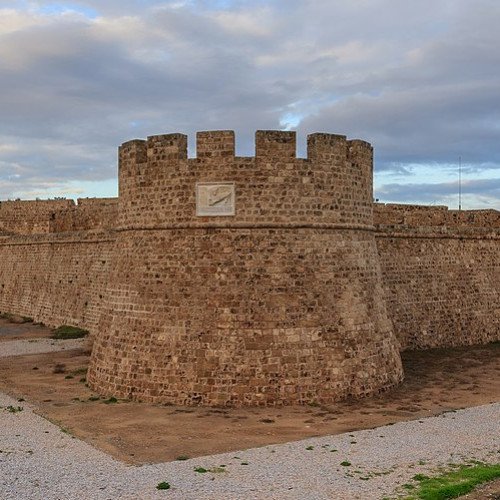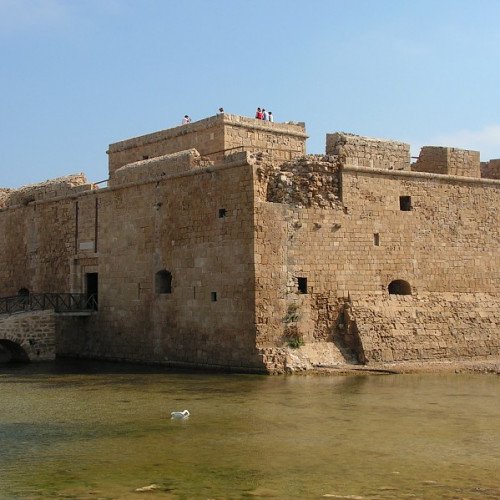Castles of "Cyprus" OTHELLO CASTLE vs PAPHOS CASTLE

OTHELLO CASTLE
Othello Castle (Greek: Πύργος του Oθέλλου, Turkish: Othello Kalesi), also known as Othello's Tower, is a castle in Famagusta, Cyprus. It was built by the Lusignans in the 14th century, and was later modified by the Venetians. The modern name of the castle comes from a stage note in Shakespeare's play Othello. Othello Castle was built in the 14th century by the Lusignans (who ruled the Kingdom of Cyprus) to protect the port against possible enemy attacks. It was also used as the main entrance to Famagusta. It used to be called "impenetrable fortress" due to it being nearly impossible to attack because of very deep ditches surrounding it. After Cyprus was sold to the Republic of Venice, the castle's square towers were replaced with circular ones to suit more modern artillery. After these modifications, a relief of the Lion of St Mark was engraved above the castle's main entrance. The name of Captain Nicolo Foscari, who directed the alterations to the castle, and the date 1492 are inscribed near the relief. Apparently Leonardo da Vinci advised the refurbishment in 1481. The castle gets its name from Shakespeare's famous play Othello, which is set in a harbour town in Cyprus.
Statistics for this Xoptio

PAPHOS CASTLE
Paphos Harbour Castle is located on the edge of Paphos harbour. The original Byzantine fortress was at Saranta Kolones, some 600m to the west. This was destroyed in the earthquake of 1222. The present castle was one of two towers built by the Lusignans in the thirteenth century to protect the harbour. The eastern port tower was destroyed by an earthquake in 1491, although its ruins can still be seen further along the harbour wall. In the mid-16th century the harbour castle was dismantled by the Republic of Venice. After capturing the island, in 1592 the Ottomans restored and strengthened it. A white marble slab (dimensions: 150 × 40 cm) above the entrance of the tower refers to its reconstruction in 1592 AD, by the Turkish commander of Cyprus Ahmet Pasha (1589–1593). In 1878 it ceased to be used for military purposes and became a warehouse for salt during the British period. In 1938-9 various cracks in the walls and breakwater were repaired. The castle was damaged in the 1953 earthquake, and repairs were completed by 1969. It was also hit during the bombardment of Paphos harbour in 21 July 1974 by Turkish air and naval forces, but not seriously damaged. More recently the castle serves as a backdrop to the annual open air Paphos cultural festival which takes place in September. It was declared a listed building in 1935 and represents one of the most distinctive landmarks of the city of Paphos. Several archaeological excavations have taken place to investigate its past. Currently the castle is being used as a tourist attraction, and occasionally features thematic exhibitions. Entrance fee is €2.50, visiting hours are 8:30-17:00 on winter and 8:30-19:30 during the summer. The castle is not currently accessible for people who use a wheelchair